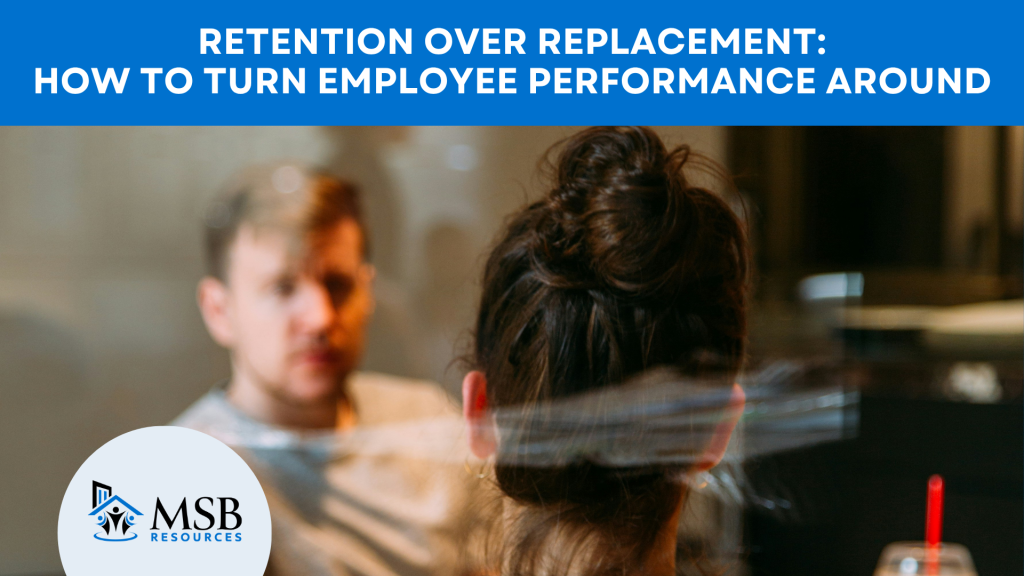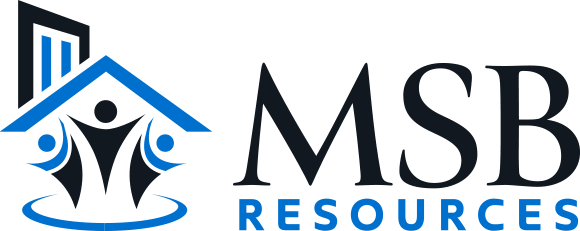Every property manager has been there: an employee who isn’t quite meeting expectations, and you’re wondering whether it’s time to start the replacement process. But here’s the reality: replacing team members is expensive and time-consuming. In the multifamily industry, where resident satisfaction depends heavily on your frontline staff, losing an employee creates ripple effects that touch everything from leasing to maintenance to community culture. Before you jump to termination, consider this: what if you could unlock potential you haven’t tapped into yet?
With the right approach, many struggling employees can transform into your strongest performers. It’s not about lowering standards. It’s about understanding what’s really happening and providing the structure, support, and development opportunities needed to help people succeed. This guide covers practical strategies to diagnose issues, provide support, and turn performance around so you can build stronger teams without the cost and disruption of constant turnover.

Diagnose the Root Cause: What’s Really Going On?
Performance issues rarely exist in a vacuum. Something is driving the behavior, whether it’s lack of training, unclear expectations, personal challenges, misalignment with the role, or even ineffective management. Before you make assumptions or jump to solutions, have an honest one-on-one conversation to understand your employee’s perspective. Ask open-ended questions like: What obstacles are you facing? Do you have the tools and support you need? Is something outside of work affecting your performance? The answers might surprise you and often reveal fixable issues you didn’t know existed.
Pro Tip: Approach the conversation with curiosity, not accusation. Frame it as “I want to help you succeed” rather than “Here’s what you’re doing wrong.”
Set Clear Expectations: Define Success Together
Here’s a common mistake: telling an employee they need to “do better” without defining what “better” actually looks like. Vague expectations lead to inconsistent performance because employees can’t hit a target they can’t see. The fix? Document-specific, measurable goals tied directly to their job responsibilities using the SMART framework: Specific, Measurable, Achievable, Relevant, and Time-bound. But don’t just hand them a list of demands. Get their input on these goals so they feel ownership, not just compliance. When employees help shape their own success metrics, they’re far more invested in achieving them. Teams with well-defined goals and expectations can see performance increase by up to 25%, proving that clarity isn’t just nice to have, it’s a game-changer.
Pro Tip: Put expectations in writing and review them together. Both parties should sign off to ensure alignment and accountability.
Create a Performance Development Plan: Your Roadmap to Success
Performance Development Plans aren’t just paperwork for HR. They’re structured frameworks that give employees a clear path forward. A good plan should include specific performance gaps, measurable goals, a realistic timeline, the support and resources you’ll provide, and yes, the consequences if improvement doesn’t happen. But here’s what makes them effective: regular check-ins. Schedule weekly or bi-weekly meetings to review progress and adjust your approach as needed. Make it collaborative, not punitive. Focus on “here’s how we’ll get you there” rather than “shape up or ship out.” When employees see you’re genuinely invested in their success, they’re far more likely to rise to the challenge.
Pro Tip: Don’t wait until the annual review to address performance issues. The sooner you intervene with a structured plan, the better chance of a turnaround.
Invest in Training and Development: Fill the Skill Gaps
Here’s a truth that might change your perspective: sometimes “problem employees” are just under-trained employees. Before you write someone off, identify the specific skill gaps holding them back. Is it technical skills? Soft skills like communication or conflict resolution? Product knowledge? Familiarity with your systems and tools? Once you know what’s missing, provide the resources to fill those gaps. This could be formal training programs, job shadowing with a top performer, online courses, mentorship, or even informal lunch-and-learns. Pair your struggling employee with a high performer for hands-on learning and support. And here’s why this matters: when employees see you investing in their growth, they invest back. In fact, 94% of employees would stay at a company longer if it invested in their learning and development. Training isn’t just about fixing gaps, it’s one of your most powerful retention tools.
Pro Tip: Make training ongoing, not one-and-done. Regular skill development keeps employees engaged and growing.
Provide Consistent Coaching and Feedback: Don’t Wait for Formal Reviews
Employees can’t course-correct if they don’t know they’re off track. That’s why real-time feedback, both constructive and positive, is essential so employees always know where they stand. Be direct but kind about areas needing improvement, and skip the “sandwich method” where you bury criticism between layers of praise. That approach just dilutes the real message. Get straight to the point with specific examples. For instance: “I’ve noticed you’ve missed three rent collection deadlines this month. What’s getting in the way? Let’s figure out how to get you back on track.”
When feedback becomes a regular part of your management rhythm rather than a once-a-year event, performance improves dramatically. Employees are 3.6 times more likely to be motivated to do outstanding work when their manager provides daily feedback versus annual feedback, proving that frequency matters far more than formality. Schedule regular one-on-ones to discuss progress, challenges, and wins so nothing ever comes as a surprise.
Pro Tip: Balance corrective feedback with recognition. Acknowledge small wins along the way to keep motivation high during the improvement process.
Implement Incentive Programs: Motivate with Meaningful Rewards
Financial incentives matter, but they’re not the only thing that drives performance. Non-monetary rewards like recognition, flexibility, and growth opportunities can be just as powerful. The key is tying incentives directly to the specific performance improvements you want to see. This could look like bonuses for hitting metrics, gift cards for going above and beyond, extra PTO for consistent excellence, or meaningful recognition that shows you notice their efforts. Make rewards attainable so your employee experiences early success and builds momentum. Small wins create confidence, and confidence drives continued improvement.
Pro Tip: Ask your employee what motivates them. Different people value different rewards, so customize when possible.
Address Behavioral Issues Head-On: Sometimes It’s Not About Skills
Not every performance issue is a skill gap. Attitude problems, negativity, resistance to feedback, and poor teamwork require a different approach than training can solve. Be direct about your behavioral expectations and explain the impact these behaviors have on the team. If the behavior stems from personal issues, offer EAP resources or flexibility where appropriate, but be clear that while you’re willing to support them, the behavior still needs to change. Document your conversations and incidents as they happen. If the behavior doesn’t improve, you’ll need that paper trail to protect yourself and your decision-making process.
Pro Tip: Separate the person from the behavior in your conversations. Say “This behavior is problematic,” not “You are problematic.”
Know When to Cut Your Losses: Not Every Employee Can Be Saved
Here’s the hard truth: you can provide all the right support, and some employees still won’t turn around. It’s not a reflection of your leadership. It’s simply a reality of managing people. Signs it’s time to move on include repeated failure to meet agreed-upon goals, unwillingness to change despite clear feedback and support, negative impact on team morale, or fundamental misalignment with the role itself. Letting go of a wrong-fit employee isn’t failure. It’s protecting your team, your residents, and the culture you’ve worked hard to build. Avoiding a toxic hire saves $12,500 in cost savings, more than twice the value of hiring a superstar performer. Document everything so your termination decision is justified and legally sound.
Pro Tip: Before terminating, ask yourself: “Have I truly given this employee every tool and opportunity to succeed?” If the answer is yes and they’re still not improving, it’s time.
Final Thoughts: Investing in People Pays Off
Turning around a struggling employee takes time, effort, and patience, but it’s worth it when it works. The benefits of investing in improvement are significant: you avoid costly turnover, retain valuable institutional knowledge, boost team morale, and develop stronger leaders in the process.
Remember: diagnose before you prescribe. Understand the root cause before jumping to solutions. Be clear and consistent. Expectations, feedback, and support should be transparent and ongoing. Invest in development. Training and coaching fill gaps that termination can’t. And know your limits. Sometimes, the best decision for everyone is to part ways.
Want to dive deeper into creating a workplace culture where employees want to stay? Check out Clint Pulver’s insights on “I Love It Here”, where he shares powerful strategies for building teams that thrive.
Need help building stronger teams and developing leadership skills in multifamily? MSB Resources offers training and consulting to help property management companies maximize their talent. Let’s talk.


